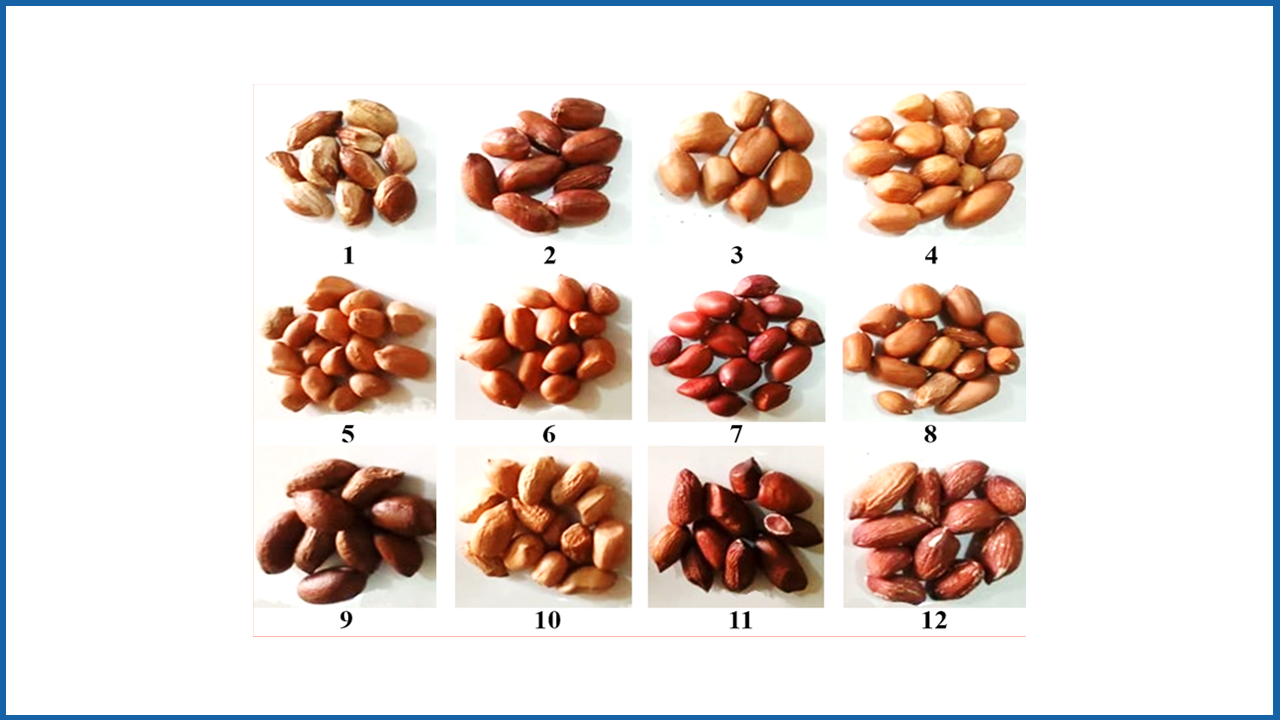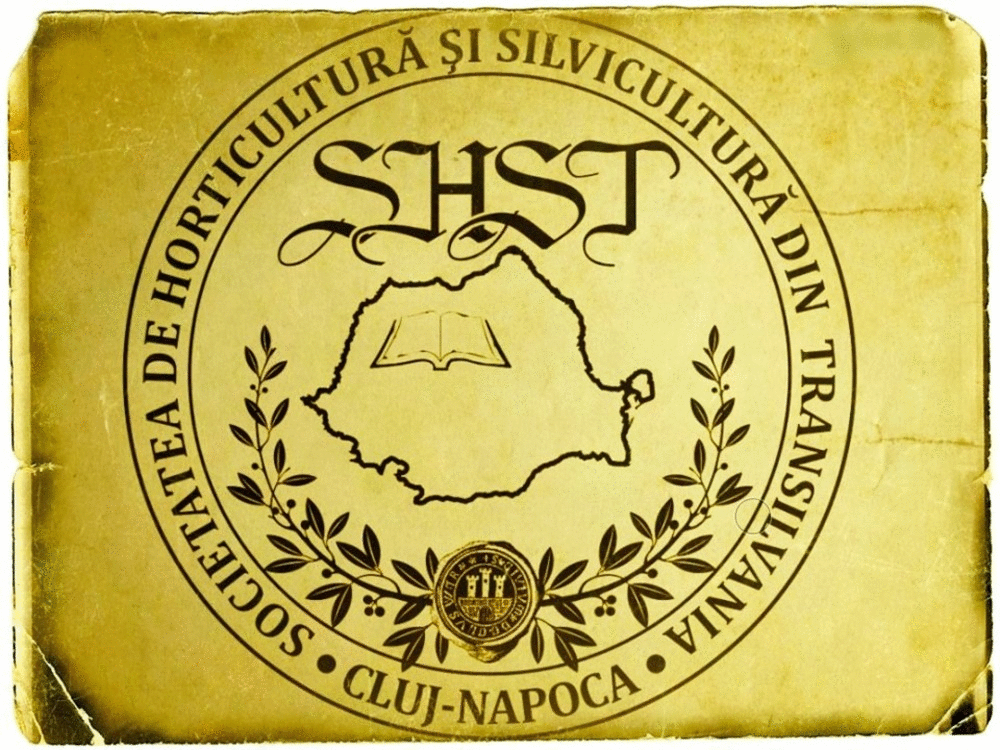Response of groundnut (Arachis hypogaea L.) genotypes to accelerated ageing treatment
DOI:
https://doi.org/10.15835/nsb13110833Keywords:
accelerated ageing; groundnut genotypes; seed germination; seedling vigour; storage toleranceAbstract
Reduction in germination of crop seeds due to depletion of food reserves and decline in synthetic activity due to ageing has become a serious concern to groundnut growers who need adequate, high quality seeds to sustain groundnut production. Therefore, to stimulate farmers’ interest in groundnut production, an experiment was conducted to evaluate some groundnut varieties for their tolerance to seed ageing stress, with a view to recommending varieties that can be considered for production in tropical countries. Seeds of nine elite groundnut genotypes, sourced from The International Crops Research Institute of Semi-Arid Tropics (ICRISAT), Kano and three other genotypes sourced from local seed dealer in Ibadan, Nigeria were subjected to seed quality assessments in the seed testing laboratory of Institute of Agricultural Research and Training, Ibadan. The seed lots were subjected to accelerated ageing procedures of 42 °C temperature and 100% relative humidity for 24 hours. Twenty-five seeds of each genotype were drawn from each genotype in three replicates at 3, 6, 12 and 24 hours of ageing. The drawn samples were reassessed to determine their tolerance ability to ageing stress. Percentage germination was transformed using arc-sine before the data on preliminary seed germination and seedling vigour data and seed ageing data were subjected to analysis of variance (ANOVA) using SAS™ Means were separated using Duncan Multiple Range Test (DMRT) at 5% level of significance while k-means non-hierarchical clustering analysis was used to group the genotypes based on their response to the ageing. Result showed that seeds of the groundnut genotypes differ in their response to ageing stress factors. Seeds of ‘Samnut-24’, ‘Samnut-25’ and ‘Ex-Dakar’ (R) were found to be more tolerant to ageing stress while ‘Samnut 22’ and ‘Boro White’ were susceptible to ageing stress. Optimum ageing for 24 hours is recommended for testing seeds of groundnut varieties for storage tolerance
Metrics
References
Adetumbi JA, Orimadegun IO, Akinyosoye ST, Akintayo OT, Agbeleye OA (2019). Enhancing planting value of rice seed through priming with humic substance. Journal of Experimental Agriculture International 29(6):1-8. https://doi.org/10.9734/JEAI/2019/46194
Ajeigbe HA, Waliyar F, Echekwu CA, Ayuba K, Motagi BN, Eniayeju D, Inuwa A (2015). A farmer's guide to groundnut production in Nigeria. Patancheru 502 324, Telangana, India: International Crops Research Institute for the Semi-Arid Tropics, pp 36. http://oar.icrisat.org/8856/1/2015-084%20Gnut%20Production%20in%20Nigeria.pdf.
Akande SR, Olakojo SA, Ajayi SA, Owolade OF, Adetumbi JA, Adeniyan ON, Ogunbodede BA (2012). Planting date effects on cowpea seed yield and quality at Southern Guinea Savannah of Nigeria. Seed Technology 34:979-988. https://stjournal.org/volume-34-no-1-2012/.
Aliyu B, Fawole I (2000). Inheritance of pubescence in crosses between Vigna unguiculata and V. rhomboidea. Nigerian Journal of Genetics 15:9-14. https://doi.org/10.4314/njg.v15i1.42267.
Al-Mudaris MA (1998). Notes on various parameters recording the speed of seed germination. Journal of Agriculture in the Tropics and Subtropics 99 (2):147-154 https://www.jarts.info/index.php/tropenlandwirt/article/view/1495
Ameer Junaithal Begum M, Venudevan B, Jayathi M (2013). Storage fungi in groundnut and the associate seed quality deterioration: A review. Plant Pathology Journal 12 (3):127-134. https://doi.org/103923/ppj2013.127.134.
Chowdhury RK, Mathur DS, Lal SK, Jayaprakash P (2003). Seed research on groundnut under NSP Crops - An overview. Proceeding of National Workshop on Groundnut Seed Technology, University of Agricultural Science, Dharwad, February 6-7, pp 6-19.
Esechie HA (1994). Interaction of salinity and temperature on the germination of sorghum. Journal of Agronomy and Crop Science 172:194-199. https://doi.org/10.1111/j.1439-037X.1994.tb00166.x.
Ghosh A, Singh VJ, Gampala S, Sahoo P, Chakraborti SK (2015). Response of groundnut treated seed to accelerated ageing. Environment & Ecology 33(3):1192-1195. https://drive.google.com/file/d/1v4i0JGKjq3DcMdmj72tgkH18dd64APoA/view
ISTA (2020). International Rules for Seed Testing. The Germination tests. Volume 2020(1):1-14 https://doi.org/10.15258/istarules.2020.05.
Jagadish SVK, Septiningsih EM, Kohli A, Thomson M J, Ye C, Redoña E, Singh R K (2012). Genetic advances in adapting rice to a rapidly changing climate. Journal of Agronomy and Crop Science 198(5):360-373. https://doi.org/10.1111/j.1439-037X.005252012.x.
Kapoor N, Arya A, Siddiqui MA, Amir A, Kumar H (2010). Seed deterioration in chickpea (Cicer arietinum L.) under accelerated ageing. Asian Journal of Plant Sciences 9:158-162. https://doi.org./10.3923/ajps.2010.158.162.
Mavi K, Demire I, Matthews S (2010). Mean germination time estimates the relative emergence of seed lots of three cucurbit crops under stress conditions. Seed Science and Technology 38:14-25. https://doi.org/10.15258/sst.2010.38.1.02.
Ndjeunga J, Ntare BR, Abdoulaye A, Ibro A, Zarafi MA, Cisse Y, … Micko I (2010). Farmer preferences for groundnut traits and varieties in West Africa: Cases of Mali, Niger and Nigeria, Working Paper Series no. 27. Patancheru 502 324, Andhra Pradesh, India: International Crops Research Institute for the Semi-Arid Tropics. 32pp. http://oar.icrisat.org/221/
Ndjeunga J, Ntare BR, Waliyar F, Echekwu CA, Kodio O, Kapran I, … Da Sylva A (2008). Early adoption of modern groundnut varieties in West Africa. Working Paper Series No. 24. Sahelian Center, BP 12404 Niamey, Niger: International Crops Research Institute for the Semi-Arid Tropics, pp 62. http://oar.icrisat.org/6795/
Ntare BR, Diallo AT, Ndjeunga J, Waliyar F (2008). Groundnut seed production manual. International Crops Research Institute for the Semi-Arid Tropics (ICRISAT), Andhra Pradesh, India. http://oar.icrisat.org/420/1/CO_200803.pdf.
Okunlola G, Idehen E, Adetumbi J, Alake C, Akinyosoye S, Amusa O (2020). Genetic studies of soybean [Glycine max (L.) Merr.] response to seed storage stress factors. Acta Agriculturae Slovenica 116(1):23-34, https://doi:10.14720/aas.2020.116.1.1181.
Peksen E. Peksen A, Bozoglu H, Gulumser A (2004). Some seed traits and their relationships to seed germination and field emergence in Pea (Pisum sativum L.). Journal of Agronomy 3:243-246. https://doi.org/10.3923/ja.2004.243.246.
Rao NK, Dvssr S, Bramel PJ (2002). Effects of shell and low moisture content on Peanut seed longevity. Peanut Science 29:122-125. https://www.peanutscience.com/doi/pdf/10.3146/pnut.29.2.0008.
Rastegar Z and Kandi MAS (2012). The effect of salinity and seed size on seed reserve utilization and seedling growth of soybean (Glycin max). Journal of Seed Science and Technology 1:1-5. https://www.sid.ir/en/journal/ViewPaper.aspx?ID=276630
Sastry DVSSR, Upadhyaya HD, Gowda CLL (2007). Survival of groundnut seeds under different storage conditions. Journal of SAT Agricultural Research 5:3. http://ejournal.icrisat.org/volume5/Groundnut/gn4.pdf.
Suma A, Sreenivasan K, Singh AK, Radhamani J (2013). Role of relative humidity in processing and storage of seeds and assessment of variability in storage behaviour in Brassica spp. and Eruca sativa. The Scientific World Journal 1-9. https://doi.org/10.1155/2013/504141.

Downloads
Published
How to Cite
Issue
Section
License
Papers published in Notulae Scientia Biologicae are Open-Access, distributed under the terms and conditions of the Creative Commons Attribution License.
© Articles by the authors; licensee SMTCT, Cluj-Napoca, Romania. The journal allows the author(s) to hold the copyright/to retain publishing rights without restriction.
License:
Open Access Journal - the journal offers free, immediate, and unrestricted access to peer-reviewed research and scholarly work, due SMTCT supports to increase the visibility, accessibility and reputation of the researchers, regardless of geography and their budgets. Users are allowed to read, download, copy, distribute, print, search, or link to the full texts of the articles, or use them for any other lawful purpose, without asking prior permission from the publisher or the author.













.png)















